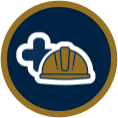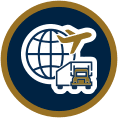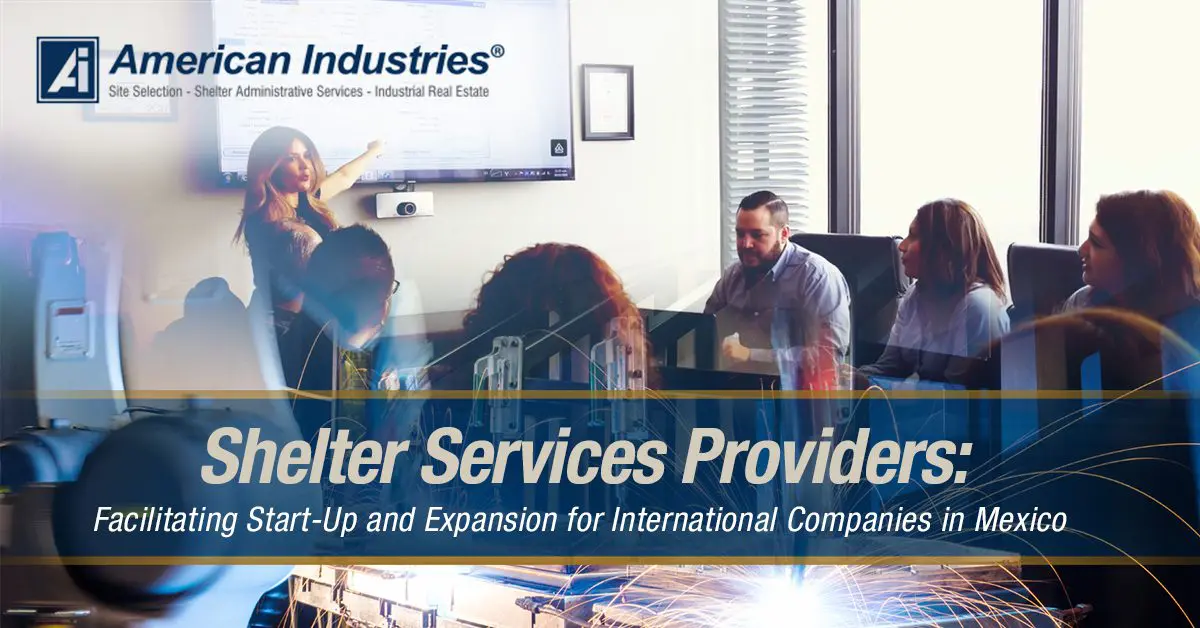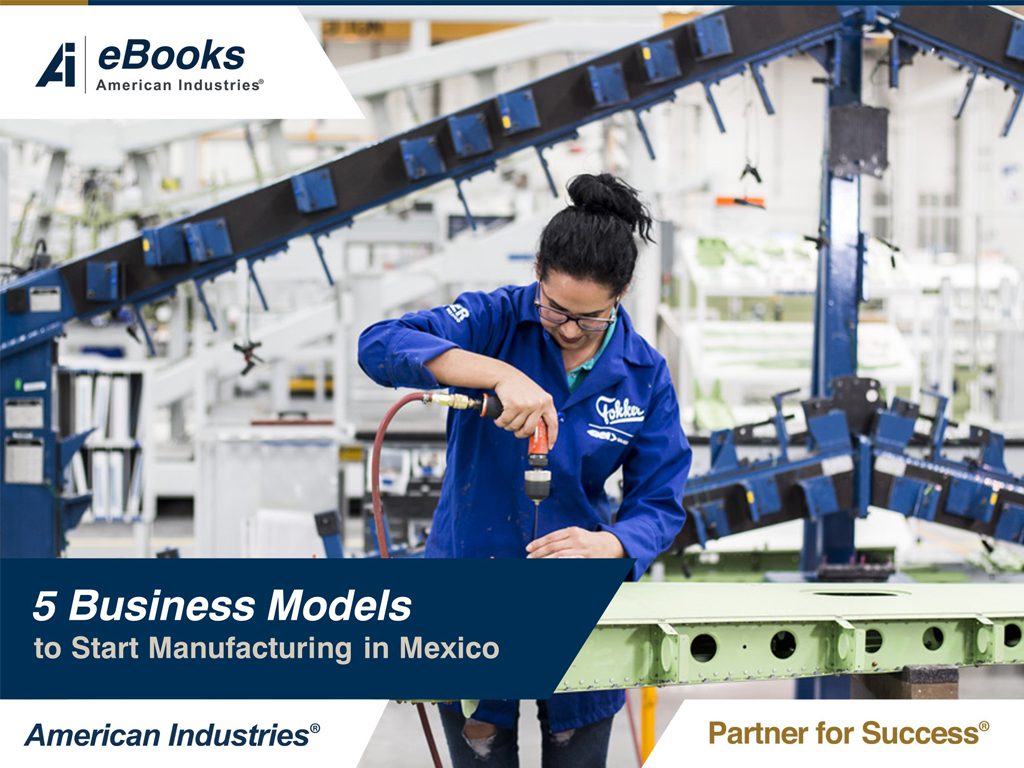Shelter Services in Mexico for Manufacturing
How Can We Help You?
Operating responsibilities
American Industries works with our clients to optimize operational efficiency through the clear division of responsibilities. While clients oversee direct operations, including full control over production quality, ownership of raw materials, machinery, and the purchasing of direct materials, American Industries takes on the pivotal role as the legal employer of record in Mexico. As leaders in shelter manufacturing in Mexico, we are responsible for ensuring full compliance with all Mexican legal, fiscal, and permitting requirements, thereby mitigating risks for our clients. Our services extend to providing expert administrative support, a state-of-the-art IT platform, and immediate access to tax-saving certifications like IMMEX, IVA-IEPS, and OEA. We also cultivate and maintain vital relationships with local business partners, such as unions, suppliers, and government entities. This division allows clients to focus on their core business activities, secure in the knowledge that all legal and regulatory obligations in Mexico are being expertly managed by American Industries.
- Overseeing direct opperations
- Full control over production and quality
- Owership of raw materials, machinery and equipment
- Purshasing of direct materiales
- Legal entity and employer of record in Mexico
- Compliance with al Mexican legal requirements
- Expert administrative support for your operation
- Solid IT platform (administrative sofware systems and communications data link)
- Immediate access to IMMEX, IVA and OEA certifications
- Maintains relationships with local business partners (unions, suppliers and government entities, among others)
American Industries’ Added Value
American Industries offers unparalleled added value to its clients by serving as a gateway to immediate access to certifications such as IMMEX, IVA-IEPS, and OEA, which provide significant savings and streamline the establishment of operations in Mexico. In addition, our long-standing relationships with local partners set us apart. Over the past 47 years, we have cultivated strong ties with industrial clusters, educational institutions, and government entities. These relationships facilitate a smoother entry into the Mexican market and provide our clients with a competitive edge through local insights and collaborative opportunities. By partnering with American Industries, clients gain an immediate advantage, leveraging our local expertise and network to optimize their operations in Mexico.
Shelter Services
Learn more about the comprehensive suite of shelter services American Industries offers to facilitate the seamless establishment and operation of your company in Mexico. Each service has been meticulously designed to allow you to focus on your core business activities while we handle the complex administrative and legal requirements.





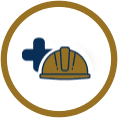



Human Resources includes:
- Recruitment, selection and hiring
- Salary and benefits administration
- Labor management
- Payroll services
- Employee retention programs
- Occupational health and safety (OSHA)
- Infirmary coordination
When setting up manufacturing in Mexico, effective human resources management is crucial. As your partner for success, American Industries provides tailored HR services including efficient recruitment, hiring, salary, and benefits administration, ensuring employee retention and a committed workforce.
As part of our comprehensive Mexico shelter solutions, we guarantee timely payroll services, reducing liabilities and boosting your employer reputation. Our focus extends to creating a positive labor environment and conditions, as well as specialized programs to minimize employee turnover. We prioritize Occupational Health and Safety compliance, ensuring a safe workplace, and offer infirmary coordination for timely medical care for employees.
Customs and Import/Export Administration includes:
- IMMEX program
- Record-keeping responsibilities
- Customs services and brokers coordination
- Optimization of import duties
- Mechanisms for transfers between companies
- Customs compliance
- Certifications: OEA/C-TPAT, VAT (AAA)
American Industries simplifies and facilitates customs and import/export administration processes for international businesses and allows you to take advantage of cost-saving programs like IMMEX, OEA/C-TPAT, and VAT (AAA) from day one when operating under our Mexico shelter program.
We handle all record-keeping, ensuring smooth imports and exports, allowing you to concentrate on your core business activities. Our coordination with customs services and brokers streamlines customs clearance and inter-company transactions. We prioritize full customs compliance to eliminate potential liabilities.
to delve deeper into how American Industries’ shelter services can streamline your customs and import/export administration.
Accounting Services and Fiscal Compliance includes:
- Responsible for all client's tax obligations compliance, including corporate and payroll taxes
- General accounting services
- Profit sharing (PTU)
- Control of fixed assets
- Financial reports as required by client
- In charge of external audits
American Industries simplifies accounting and fiscal compliance for foreign businesses through its Mexico shelter program, enhancing financial management and allowing you to focus on your core business. Our comprehensive suite of services ensures full compliance with Mexico's tax obligations, including corporate, payroll, and profit-sharing taxes.
Our general accounting services align with international standards and provide you with accurate, up-to-date account information. In addition, we manage fixed assets, prepare customized financial statements and reports, and handle external audits.
for more in-depth information on how our American Industries can assist you in accounting and fiscal compliance.
Accounting Services and Fiscal Compliance includes:
- Legal representation
- Legal structure and compliance
American Industries simplifies accounting and fiscal compliance for foreign businesses, enhancing financial management and allowing you to focus on your core business. As part of our Mexico shelter solution, our comprehensive suite of services ensures full compliance with Mexico's tax obligations, including corporate, payroll, and profit-sharing taxes.
Our general accounting services align with international standards and provide you with accurate, up-to-date account information. In addition, we manage fixed assets, prepare customized financial statements and reports, and handle external audits.
for further insights into how our American Industries can assist you in ensuring your operations’ legal compliance.
Environmental and Occupational Health and Safety includes:
- Compliance support with environmental regulations and studies required to operate in Mexico
- Identify and obtain permits and licenses (New and renewals)
- Staying up-to-date on requirements and regulations
- Support implementing controls and procedures
- Schedule and complete regular internal inspections
- Act as client’s representative during government inspections
American Industries provides specialized environmental and occupational health and safety services for manufacturing. American Industries provides specialized environmental and occupational health and safety services for manufacturing. As part of our Mexico shelter services, we handle the entire process including the acquisition and renewal of necessary permits and licenses for your business operations in Mexico, keeping up with regulatory changes, representing your company during authority inspections, and ensuring ongoing compliance with all standards.
We conduct regular internal inspections to maintain a safe and clean operational environment and assist in implementing controls and procedures to fully comply with health and safety laws, ensuring your operations meet or exceed regulatory standards.
for more details on how American Industries can assist you in environmental and occupational health and safety.
Logistic services and warehousing solutions:
- Río Bravo warehousing services
- Inbound land shipment services
- Outbound land and air shipment services
- Preferential rates for American Industries network
- Local freight supervision
- Documentation process
American Industries offers efficient freight forwarding and warehousing solutions at preferential rates to our shelter clients. Our Mexico shelter services include inbound land shipment to ensure the safe and timely arrival of raw materials and goods as well as outbound land and air shipment services for the prompt delivery of finished products in addition to local freight supervision to optimize your logistics chain.
We keep meticulous and impeccable records and documentation, and our specialized Río Bravo warehousing services offer secure and efficient storage solutions, further supporting your operational needs.
to learn more about how our American Industries can assist you in freight forwarding and warehousing.
Expatriate Assistance includes:
- Processing of immigration permits
- Income tax management for ex-pats in Mexico
- Payroll management for ex-pats
- Importation of household goods
- Travel logistics and local transportation
- Support getting settled in a new city
American Industries provides comprehensive expatriate assistance services for employee relocation. Our services include processing immigration permits for legal residence and work, income tax management guidance, and efficient payroll management in Mexico.
As a Mexico shelter company, we also support the importation of household goods, travel logistics, and local transportation arrangements to facilitate a smooth transition and offer personalized assistance in finding local schools and addressing individual needs, ensuring a quick adaptation for employees and their families to their new environment in Mexico.
for more information on how our American Industries can assist you and your employees in the relocation process.
Networking with Organizations, Clusters and Governments
- Private sector: associations, clusters, banks, etc.
- Government agencies: federal, state, municipal authorities
- Educational institutions
American Industries, a trusted Mexico shelter company, has over 40 years of experience in Mexico, enabling us to offer more than just logistics and compliance support for manufacturing operations. Our unique service includes access to an extensive network of business contacts, fostering synergy and facilitating a smooth establishment process in Mexico.
Clients gain access to our established relationships with private sector entities, including associations, clusters, and banks, as well as connections with government agencies and educational institutions at various levels. This comprehensive approach, a hallmark of our shelter services, provides the resources necessary for successful operations. As an opinion leader with an impeccable reputation, American Industries ensures clients are well-positioned for success in Mexico.
to learn more about how American Industries can assist you in networking.
Why choose American Industries as your partner in Mexico?
Key Benefits of Shelter Administrative Services
Choosing American Industries' Shelter and Administrative Services offers many advantages that enable your company to focus solely on its core business activities. Some of the key benefits include:

Legal Entity and Employer of Record:
As a Mexico shelter provider, we serve as your legal entity and employer of record in Mexico, eliminating the complexities of establishing a separate legal presence.

Guaranteed Compliance:
Our services ensure that your operation fully complies with all Mexican legal requirements, mitigating risks and liabilities.

Expert Administrative Support:
As a trusted Mexico shelter provider, our experienced team provides specialized administrative support tailored to your operation's unique needs.

Robust IT Platform:
Our solid IT platform includes advanced administrative software systems and a secure communications data link, ensuring seamless operation.

Immediate Certifications:
Gain immediate access to crucial certifications like IMMEX, IVA-IEPS, and OEA, expediting your entry into the Mexican market and ensuring you can benefit from tax and customs savings from day one.

Local Business Relationships:
As a Mexico shelter provider, we maintain strong relationships with local business partners, including unions, suppliers, and government entities, providing you with invaluable local insights and networking opportunities.
By leveraging these benefits, your company can operate more efficiently and effectively in Mexico while we handle the administrative and legal intricacies.
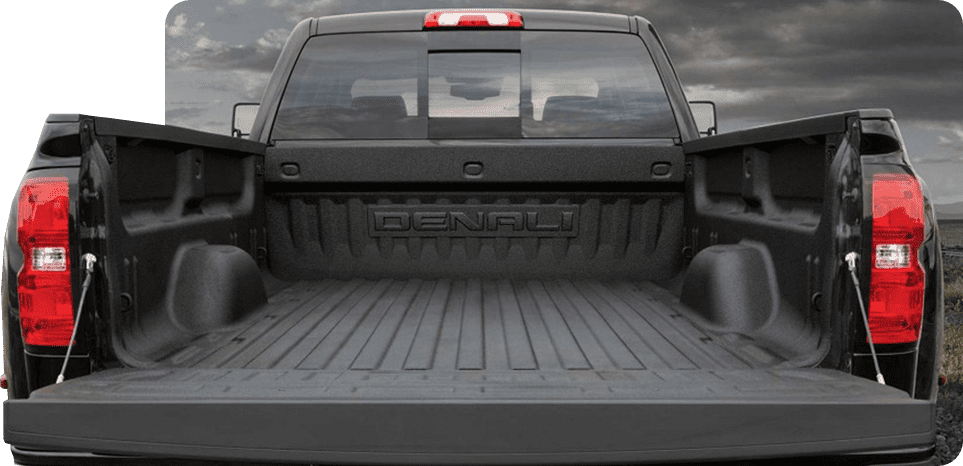
Success Story
“…A lot of people first told me when we were thinking about moving to Mexico that we would just be in all kinds of trouble trying to keep things straight, and trying to negotiate customs, immigration, exportation, and all kind of governmental reporting that had to be done -and none of that took place with the help of American Industries… I cannot tell you how easy that has been -I have not spent a night at home worrying about what we are doing in Silao Mexico…”
Discover the Ideal Business Model for Your Manufacturing Operations in Mexico with American Industries
American Industries' Shelter and Administrative Services offers the most straightforward pathway for foreign companies to start up their businesses and operate in Mexico. As a leading Mexico shelter company, we provide a comprehensive suite of services, allowing your company to concentrate on its core competencies of manufacturing or distribution while we handle all the administrative and legal functions essential for your business to succeed in Mexico. By partnering with us, you gain the advantage of seamless entry and operation, allowing you to focus on what you do best.
To learn more about our shelter administrative services, we invite you to read our articles.
Frequently Asked Questions About Mexico Shelter Services
• Strong local presence: Ensure the provider has local offices in your chosen location with experts in key areas like finance, customs, logistics, and human resources. This ensures efficient support and connections with local partners.
• Transparent fee structure: Understand how fees are calculated and what services are included. Some providers may have hidden costs or additional fees for specific services.
• Dedicated on-site staff: A dedicated team at your plant ensures quick and effective responses to daily challenges.
• Secure and robust IT platform: Reliable technology is essential to protect your data and document administrative transactions securely. American Industries’ IT software is hosted on the Oracle Cloud Platform, and we use industry standard software for our Customs, Finance, and HR services. American Industries also has a Disaster Recovery Plan (DRP) to make sure that your data is not lost in any scenario.
• Proven track record: Choose a provider with a history of success in your desired location, offering local knowledge and tried-and-true strategies.
• Clear action plan: Opt for a provider with documented processes and a structured approach for launching and operating your project. American Industries for example, not only has ISO-9001 certified shelter administrative services, but they also have a documented game plan for start-up that they have developed, refined, and executed for more than 48 years.
Unlock Your Business Potential in Mexico. Contact Us to Get Started.
Reach out and schedule your complimentary business consultation today.
Find the perfect partner in Mexico and unlock your success!
We want to answer all your questions.
Let’s Talk
Jorge
Salinas





